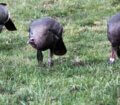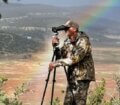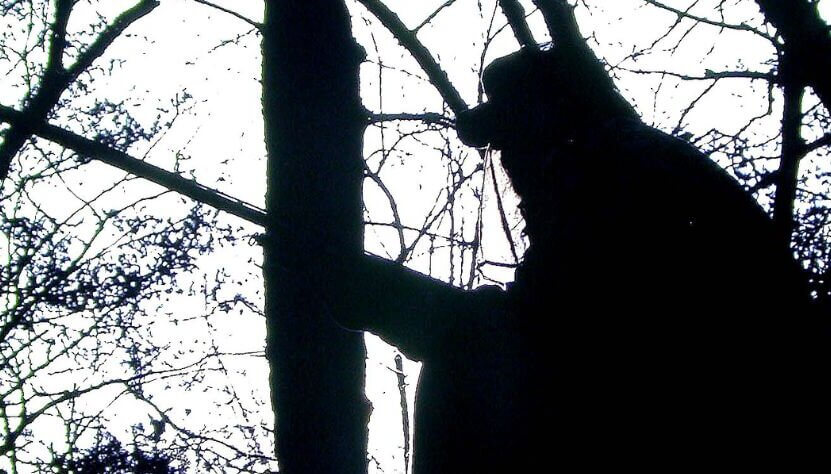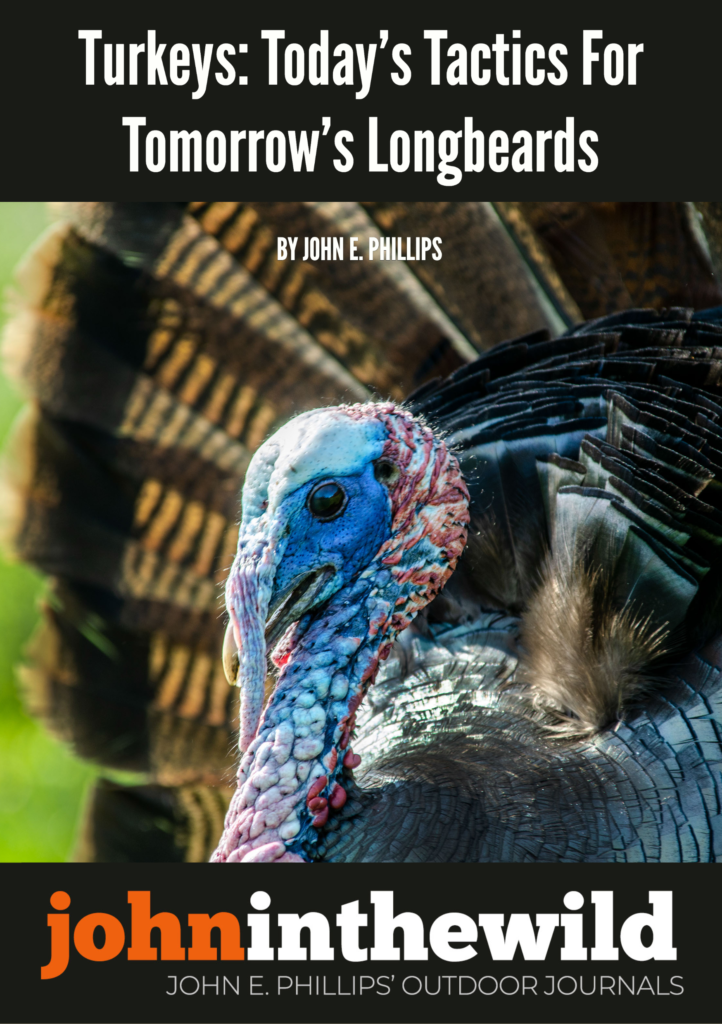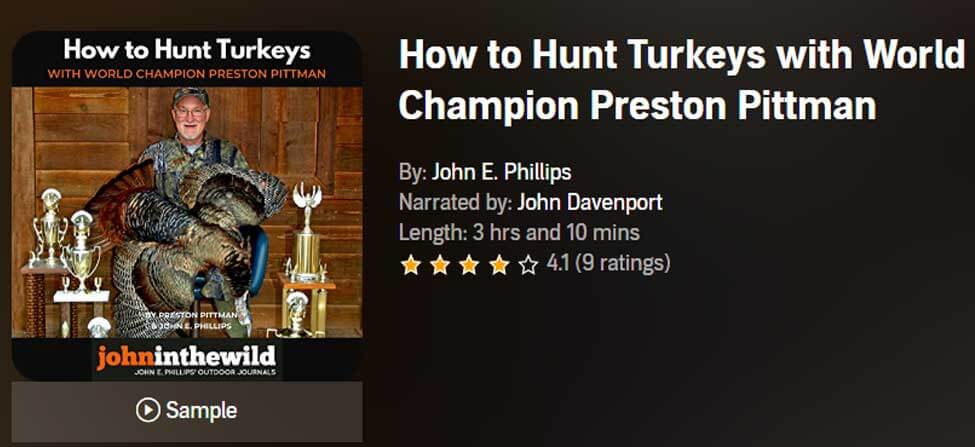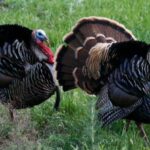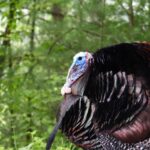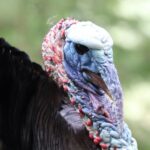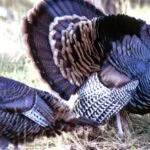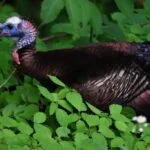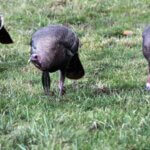John E. Phillips’ Note: When I go after a turkey, the war begins. If I don’t have to swim a creek, crawl through fresh cow manure, run through briars, climb trees, jump barbed-wire fences or slide down mountains, then I have had an easy day afield chasing turkeys. Like other aggressive turkey hunters who are scrappy and adventurous, I decide before ever leaving my home that whatever I have to do that’s legal and moral, I’ll do that day to take a tom turkey.
Aggressive hunting is not just chasing turkeys, outflanking turkeys, calling loud and long to turkeys or continuing to hunt after all hope seems gone. Going to war with turkeys is a state of mind that dictates that no matter what happens during the day, you will endure and battle fiercely, until you take your tom, or you have to be physically drug back to camp because you’re exhausted. Through the years, I’ve been fortunate enough to hunt with some of the most-enterprising war lords of the turkey-hunting fraternity who have taught me the value of being aggressive when hunting turkeys.
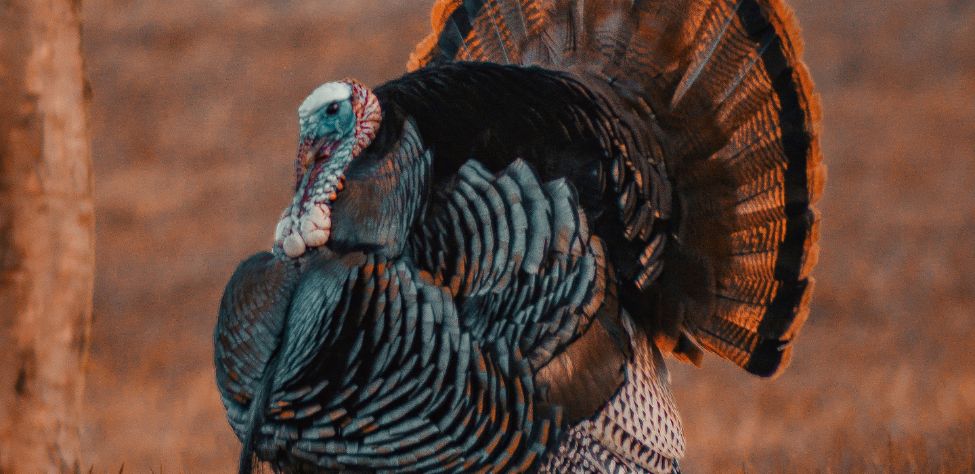
Taking Ole Bend with J. Wayne Fears: One time my longtime hunting pal, J. Wayne Fears of New Market, Alabama, hunted a particularly tough-to-take tom. Ole Bend got his name because he lived in a bend of the Tombigbee River in southwest Alabama. According to Fears, “Ole Bend was a bully, a lover and a control freak all wrapped-up in one bad bird. This area had had a lot of rain, so the sloughs and ditches were full of water. During the first two days of the hunt, I’d blow my crow calls to locate him, and he’d nearly gobble his head off. However, I couldn’t get close enough to call him in because water was always between us.

“Ole Bend was one of those turkeys that would get in a hunter’s mind and make him do things he wouldn’t normally do. On the third morning of the hunt, I decided to wade up to my chest in the slough to reach him. When I reached the same side of the bend as the bird, I discovered that he had about 20 hens with him. I couldn’t get within 150 yards with hens all around me. They’d give alarms whenever I approached. I spent the morning calling Ole Bend but couldn’t get him to budge. As I walked back to camp soaking wet, I decided, ‘I’ll have to do something entirely different to get Ole Bend.’ I knew he was the boss gobbler in that area, since when Ole Bend gobbled, the other male turkeys didn’t open their beaks.
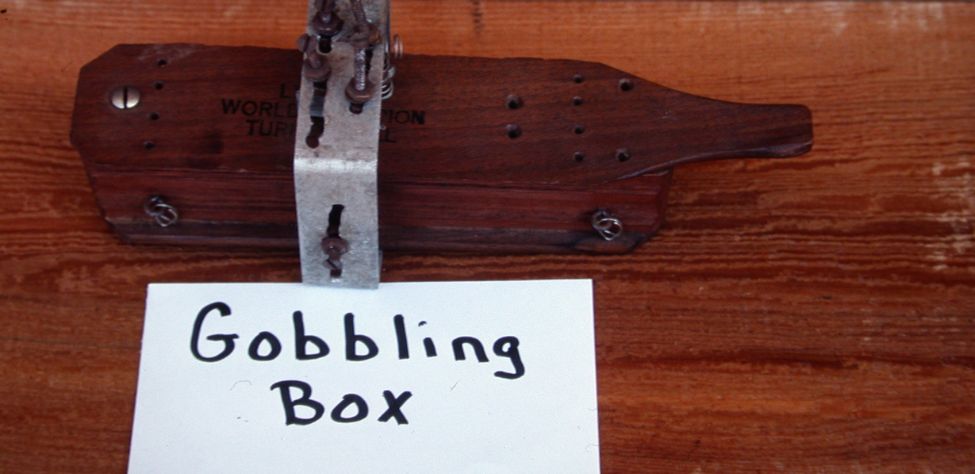
“I talked to a friend who suggested that to war with this tom we wade the chest-high slough before daylight and get as close as possible to where he was roosting. So, we did. Then I went to one end of the ridge above the water and yelped. My friend went to the ridge’s other end and used his gobbling box. We wanted to paint a picture in the bird’s mind that he either had to fight me or retreat to my friend’s side to make my friend a part of his harem.

“Ole Bend soon was double and triple gobbling toward my buddy’s gobbling box and my mouth yelper. We could tell that Ole Bend was having difficulty planning his next actions. We’d gotten into that turkey’s mind. As the turkeys walked toward the sound of the gobbling box, I gave some soft hen yelps. Ole Bend turned around toward me, indicating that he’d rather pick-up a new hen than fight another gobbler. Once I went silent, Ole Bend came within 30 yards of where I was sitting against a tree with a shotgun on my knee and my head down. I took a clear shot at his head. That was the most-exciting and miserable turkey hunt I ever had been on in my entire life. I waded back across the slough. Later my buddy and I weighed Ole Bend, and he only weighed 14 pounds. He hardly had any feathers on his bottom and his spurs were barely bigger than a knob on a year-old gobbler, but he did have an 11-inch beard. To me he was a trophy turkey because I’d had to work so hard to take him.”
John’s latest print book was published last week: “Turkeys: Today’s Tactics for Tomorrow’s Longbeards,” and the Audible version should be available April 1. In his book that includes John’s time-tested ways to take turkeys from his 50+ years of hunting them, he mentions that the two ways to learn how to turkey hunt both work. You can learn all about turkey hunting by yourself through trial and error, which is the slowest way to learn to turkey hunt and means you’ll make the most mistakes. Or, you can hunt with the best turkey hunters anyone knows and learn from them what they do, why they do it, when they do what, and what not to do.
Expert Guidebooks on Turkey Hunting: Best Sellers
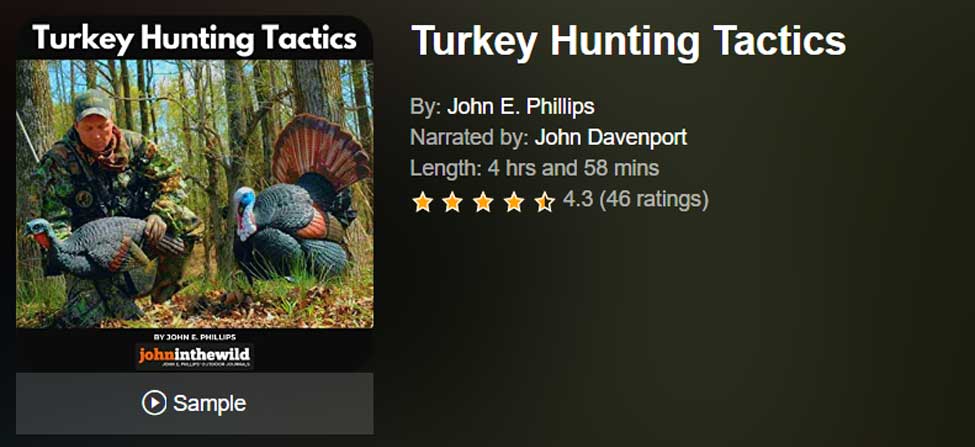
Turkey Hunting Tactics
This turkey hunting audiobook has entertaining chapters like: “How to Miss a Turkey”, “Hunting with a Guide”, and “The Turkey and the New York Lady”.
You’ll learn about all the subspecies of turkey across North America, how to use a turkey call, how to scout before turkey season, how to find a turkey to hunt, and what hunting gear you’ll need to put the odds in your favor to take a wily gobbler.
VERSIONS: AUDIBLE, KINDLE & PRINT
How to Hunt Turkeys with World Champion Preston Pittman
You easily can take a turkey if you don’t make any mistakes, but you have to know what the deadly sins of turkey hunting are to keep you from making those mistakes. If you understand how to hunt a turkey, you’re far more likely to take a gobbler than if you just know how to call a turkey.
Of course, calling is important, and if you want to learn to call a turkey, Preston Pittman will teach you how to call turkeys with box calls, friction calls, diaphragm calls, and other turkey sounds.
You’ll also learn why Preston Pittman once put turkey manure all over his body to kill a tough tom.
When you have turkeys that strut and drum in the middle of a field, when you know there’s no way to get close enough to get a shot, Pittman will show you some weird tactics that have worked for him to help you hunt tough ole toms.
But the main thing you’ll learn in this book is how to become the turkey.
Using what he’s learned while hunting wild turkeys, he’s also become a master woodsman who can take most game, regardless of where he hunts. To learn more secrets about how to be a turkey hunter from one of the world champions of the sport, this turkey-hunting book with Preston Pittman is a must.
VERSIONS: AUDIBLE, KINDLE & PRINT
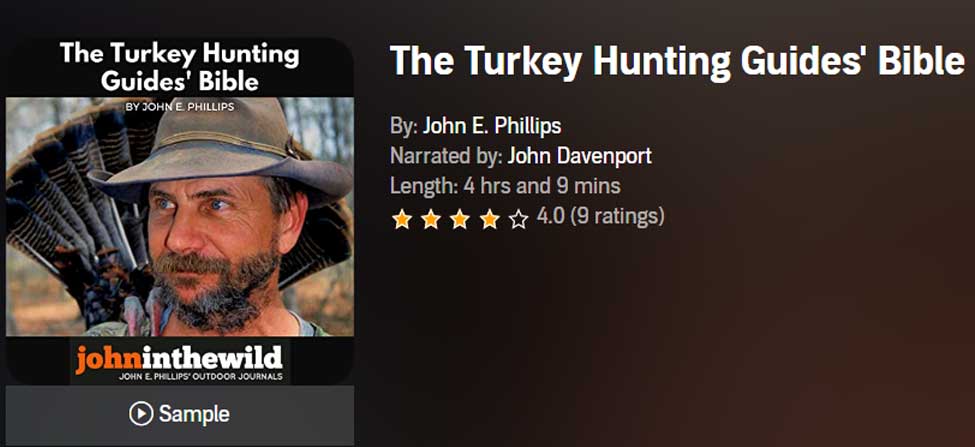
The Turkey Hunting Guides’ Bible
The quickest way to learn how to turkey hunt successfully is to either hunt with a turkey hunter with years of experience or a turkey-hunting guide. These two types of turkey hunters have solved most of the problems turkey hunters ever will face.
Just as one size of shoes won’t fit every person, one style of turkey hunting doesn’t fit each hunter. Each turkey-hunting guide interviewed for this book has his own style of calling, hunting, and outsmarting turkeys.
While listening to this book, make a list of the new information you’ve learned, take that list with you during turkey season, and try some of the new tactics. Then you’ll become a more versatile turkey hunter and prove the wisdom from The Turkey Hunting Guides’ Bible.
VERSIONS: AUDIBLE, KINDLE & PRINT
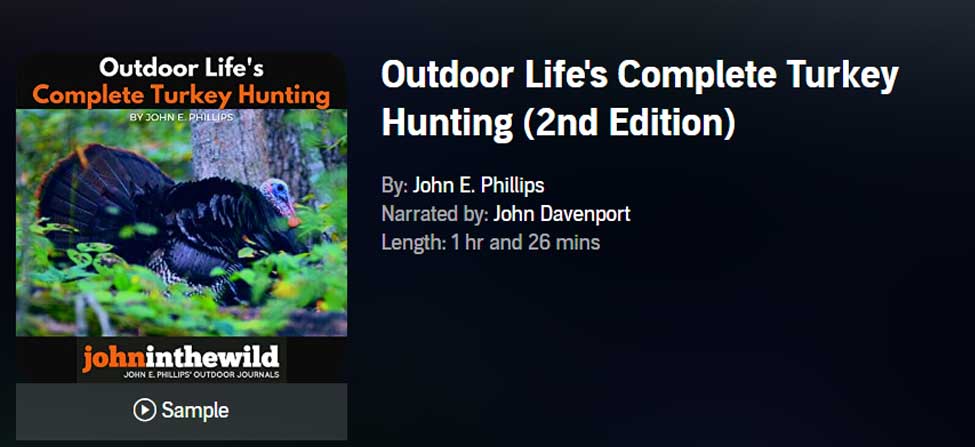
Outdoor Life’s Complete Turkey Hunting (2nd Edition)
This Audible book will help you learn how to call turkeys with two of the nation’s best, longtime and well-known turkey callers, Rob Keck, formerly with the National Wild Turkey Federation, and Lovett Williams, a wildlife biologist who recorded wild turkeys giving the calls that you’ll learn how to make on various types of turkey callers.
VERSIONS: AUDIBLE & KINDLE

